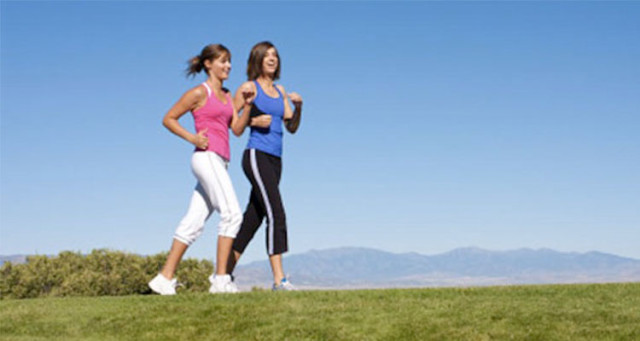The fitwalking (more rarely fit walking) is a non-competitive sport. This practice, often called the art of walking, consists of walking at a pace faster (from 7 to 9 km / h approximately) of that which takes place when walking normally, essentially, along with Nordic walking, power walking, walking energy, etc. ., one of the many variants of walking.
Essentially, the fitwalking (not to be confused with the gear that is a sport of athletics also provided as an Olympic discipline) would be a sportier version of the simple and scientific concept of walking.
The term fitwalking is derived from the combination of two English words, fitness (fitness) and walking ( from the verb to walk, walk) and can be loosely translated as walking to keep fit.
Currently, the practice of fitwalking is widespread in various parts of the world, including the United States where to define this discipline, you will generally use different terminology: power walking (that phrase can be translated as powerful journey, a journey of power). Its spread in our country has been gradually growing, and even sporting events of importance (such as, for example, the Florence Marathon) provide space for this sport.
The technique of fitwalking provides for the cyclic repetition of a number of movements. The cycle path (otherwise said stride) is divided into two steps; begins with the contact of the heel of a foot and a term with another contact of the heel of the same foot. The pitch is the distance between the right foot and left foot (the end of the push with the back foot and contact of the heel of the foot that is forward) and represents the middle of the cycle.
Whether it’s movements ” softer ” than those that are practiced during the March, but at the same time more determined and vigorous than those made during simple walking. In order to facilitate both the thrust that the speed, the torso should be slightly tilted forward, but still must be relaxed as well as relaxed neck and shoulders. Your arms should reach an angle of approximately 90 degrees, and during the swing hands should reach almost centrally on the chest. Then: a large stride, posture and rhythm relatively challenging.
There are three categories of fitwalking: fitwalking lifestyle, performer fitwalking style and sport style fitwalking. The life style is by far the most practiced and then it is normal to consider it as a point of reference for this article. In addition, the forms ” competitive ” or ” performance ” of fitwalking not make sense because there is already running, Olympic sport that has given us so many champions. So if you want to walk so intense you can just spend the March. The English terms as a performer style and sporting style are useless, just … march.
Fitwalking: our considerations.
Our opinion on fitwalking in roughly all we have said about the walking, the fitwalking is our opinion, one of the many forms of low-intensity training and wanting to propose as a healthy sporting activity seems a bit like a stretch. We try to understand why.
Normally, the fitwalking is recommended as an activity to be carried out a few days a week with sessions of about 40. Now, think about that with 40 fitwalking you modify physiological parameters of the subject is very optimistic, a little how to hope that is enough 20 race day. If not, then you fitwalking everyday is illusory to hope that is enough 3 hours a week. A subject is even believed to be active and play sports, but its physiological indices (it is sufficient to perform a blood test) are the same as a sedentary. Realistically, to get some meaningful benefit you should practice daily sessions lasting at least 80-90.
The fitwalking is often recommended for those who are overweight recalling that during a one-hour, session can burn about 300 kcal, the problem is that, in hindsight, 300 kcal are not much, mainly because the fitwalking not get the same level of stress of a race ” pulled “. There are several activities can lead us to walk for hours at a good pace, often very ” heavy “. You burn so many calories, but increase appetite, which does not happen (for passing a minimum level of fatigue) when you train with the race.
The fitwalking can be a good choice for those overweight individuals who, after long periods of time (perhaps years) of inactivity, they are going to start (or resume) a sporting activity and aerobic exercise (such as running or cycling, for example). Those who are not overweight can instead start by alternating, running and walking. In summary, the fitwalking can be recommended to people who are overweight or decided with particular pathologies.
A subject is considered healthy (in our opinion being overweight is a disease in all respects as a physiological parameter, the fat is not standard) because fitwalking should do? The only answer is to not do a lot of effort. But this answer (who knows shorthand and lack of willpower) is not at all convincing …










